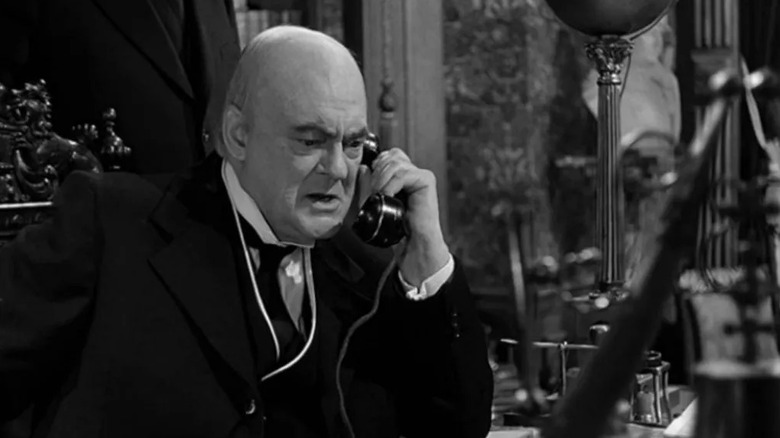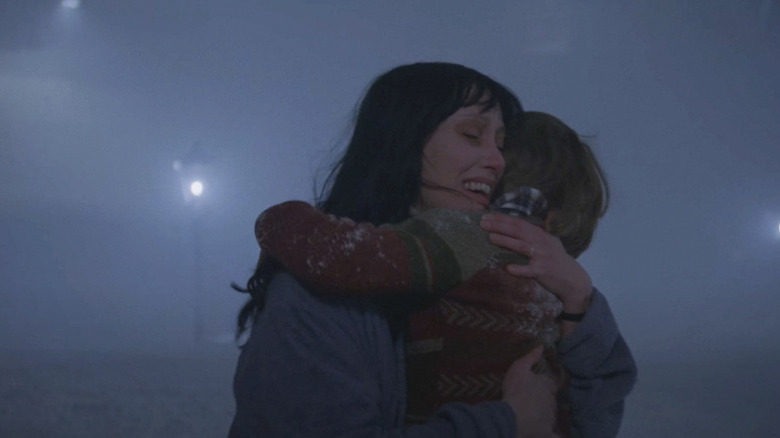
Although there is no shortage of Christmas movies out there, very few of them end up lasting a long time in the public consciousness. The last movie to truly prove itself long-term was the 2003 comedy “Elf,” which is up there on most people’s rewatch list every time the holidays come around. For the most part, though, our favorite Christmas movies are the older ones, like “Home Alone” (1990), “A Christmas Story” (1983), “A Christmas Carol” (1951), or “Miracle on 34th Street” (1947).
Before all of those was “It’s a Wonderful Life,” which came out in 1946 and is now considered the absolute best film the Christmas genre has to offer. With a score of 8.6 out of 10 on IMDb, the movie is ranked 21st among the site’s top movies ever. In 2024, at least, nobody’s got a bad thing to say about the film. It’s a heartwarming story about a guy who learns to value the wonderful life he has, and it’s been parodied and referenced in countless sitcoms ever since; how could anyone possibly not like it? At the time of its release, though, the response was very different.
Some critics did not like It’s a Wonderful Life
When “It’s a Wonderful Life” first came out, it actually lost money at the box office, and received mixed reviews from critics. “The weakness of this picture, from this reviewer’s point of view, is the sentimentality of it — its illusory concept of life,” wrote New York Times critic Bosley Crowther. “[Director Frank] Capra’s nice people are charming, his small town is a quite beguiling place and his pattern for solving problems is most optimistic and facile.”
Meanwhile, columnist Jimmie Fidler for the Sioux City Journal complained about the movie’s class commentary:
“Lionel Barrymore’s role — that of a small town banker — is made almost inhuman. There’s been no nastier Scrooge portrayed on the screen within my memory. Sometimes I wonder what’s back of the urge to portray all rich men — on the screen and in newspaper comic strips — as either irresponsible playboys or miserly skinflints. In most cases there probably is no deliberate intent to ‘propagandize,’ but the cumulative effect is unhealthful. I’d like to see it offset by an occasional portrait of another type of wealthy man that is, Allah be praised, rather common in America — the type who works hard and unselfishly for the betterment of society.”
The FBI apparently shared Fiddler’s concern, as indicated by a later-released report on “Communist infiltration into the motion picture industry.” The entry on “Wonderful Life” read, “The film represented a rather obvious attempt to discredit bankers by casting Lionel Barrymore as a ‘scrooge-type’ so that he would be the most hated man in the picture. This, according to these sources, is a common trick used by Communists … this picture deliberately maligned the upper class, attempting to show the people who had money were mean and despicable characters.”
It’s worth nothing that most of the old reviews I found of this movie were still positive; these negative reviews serve as an important reminder of how controversy tends to wash out with time. So many now-classics were divisive when they first released, which is important to remember when dealing with the divisive movies of today.
It’s a Wonderful Life is IMDb’s best Christmas movie, but what’s #2?
Although “It’s a Wonderful Life” wasn’t a huge hit when it first came out, it became a cultural phenomenon almost entirely thanks to TV re-runs, which reminded viewers of the movie every single Christmas season and will continue to do so until the end of time. The result is the movie is now one of only two widely recognized Christmas films to make the top 250 list on IMDb. The other one is 2019’s “Klaus,” rated 8.2 and ranked 172nd overall. It’s a great movie, although given how recently “Klaus” came out, the jury’s still out over whether it’ll be forgotten within a couple years or if it’ll take the “Elf” route of staying a popular rewatch favorite for decades to come.
Then again, you could argue that there are several other Christmas films in the top 250, providing you’re using a looser definition of the term. Fans of “Die Hard” can (and often will) argue that it’s the second-highest Christmas movie, with its 8.2 rating placing it at 117th on the overall chart. There’s also the 1960 romantic comedy “The Apartment,” which isn’t usually regarded as a Christmas movie but does technically take place around the Christmas holidays. Personally, I’d argue that “The Shining” is a good Christmas movie; there’s lots of snow, there’s a family spending time together … this movie’s got everything a holiday classic needs! In that case, Stanley Kubrick’s 1980 masterpiece is the real #2 Christmas movie on IMDb, with its 8.4 rating putting it in 67th place overall.
But perhaps the most Christmas-y non-Christmas film is actually “Spirited Away.” The 2001 Miyazaki film may get a little scary at parts, but there’s a sense of childlike wonder to the whole thing that really fits the holiday mood. Most of all, there’s the soundtrack (especially during the scene where Haku remembers his past life) that feels like it’d be right at home in any Christmas music playlist. Rated 8.6 on IMDb and ranked 31st overall, “Spirited Away” blows all the other non-Christmas Christmas-y films out of the water. “Klaus” might be IMDb’s official second-best Christmas movie of all time, but I’d argue “Spirited Away” deserves the real prize.




Leave a Reply